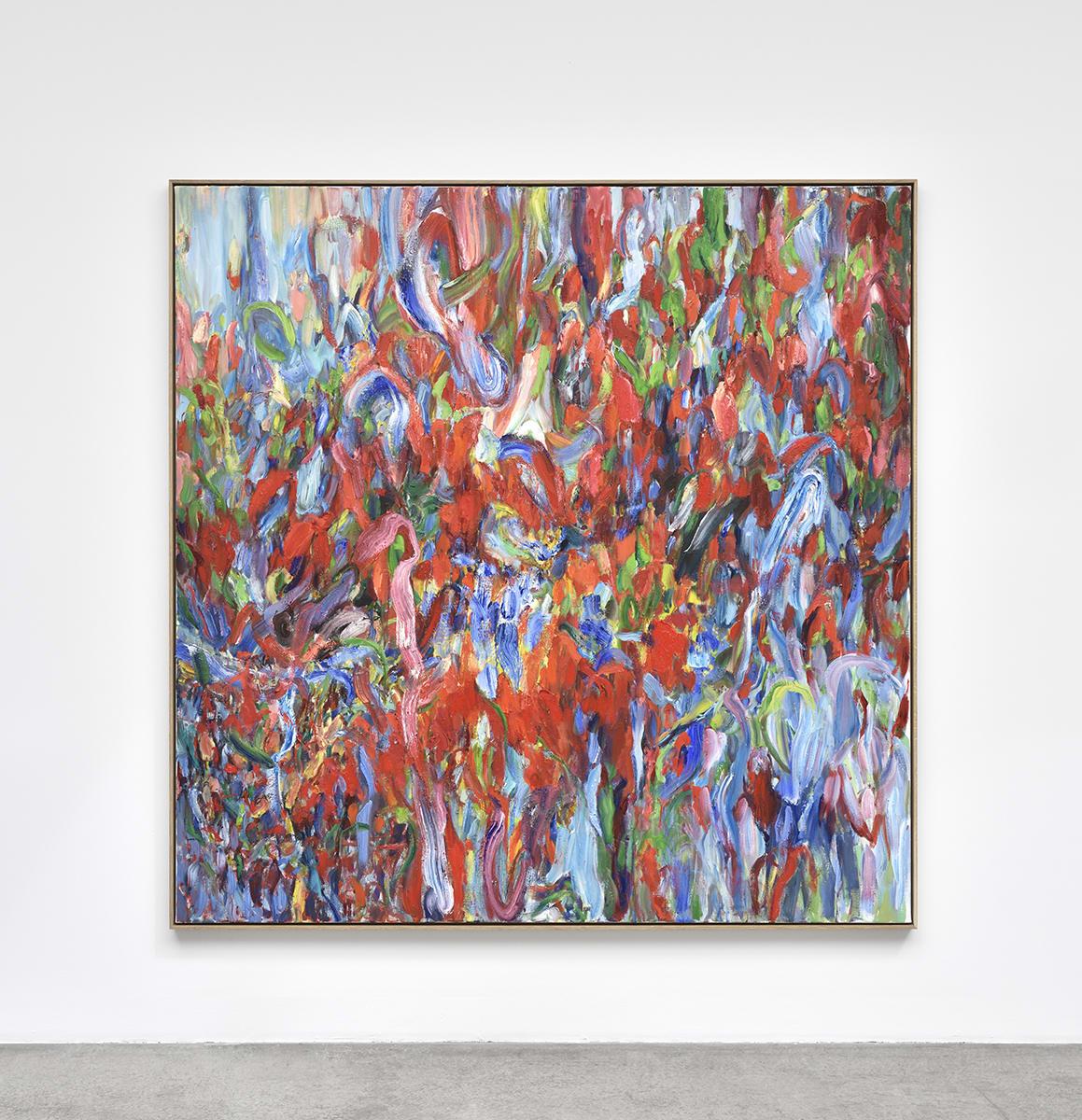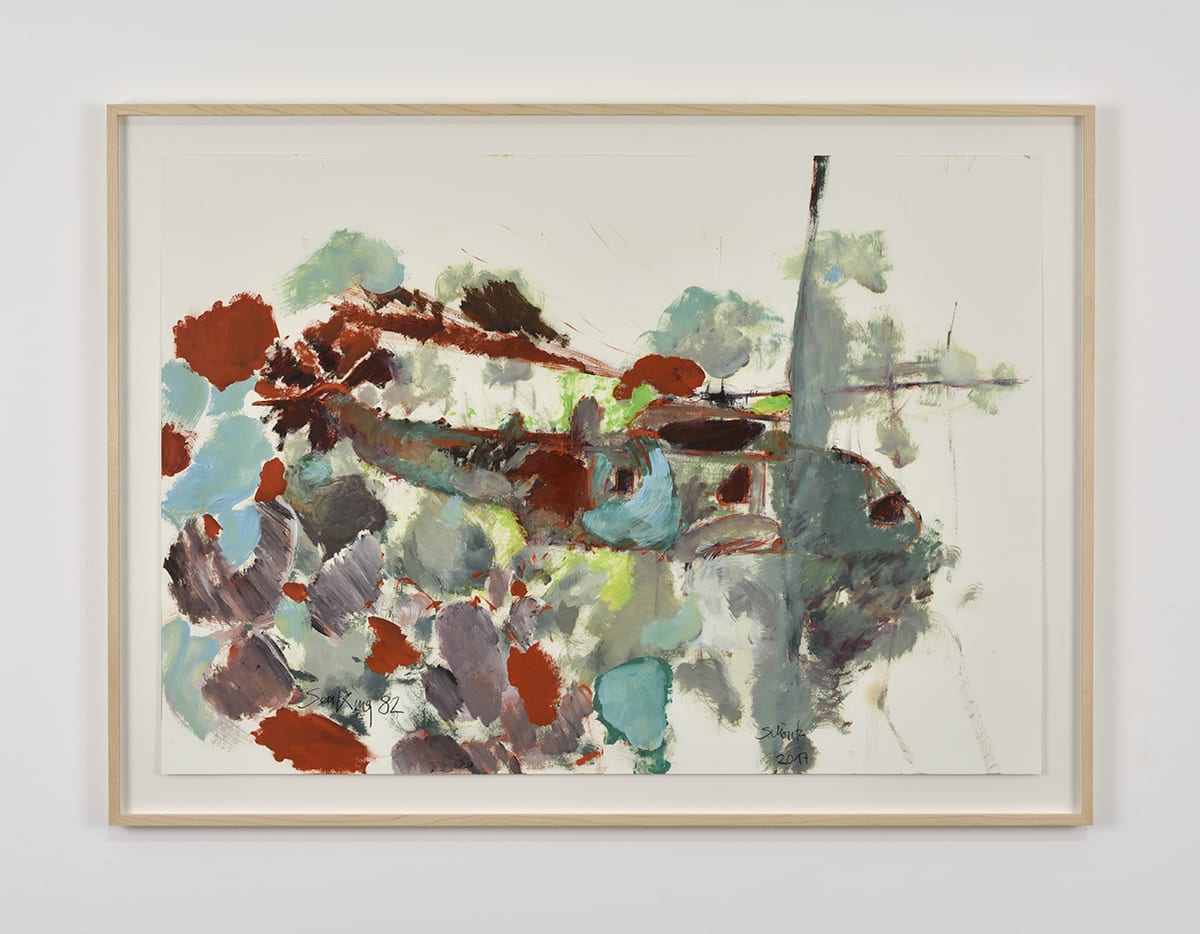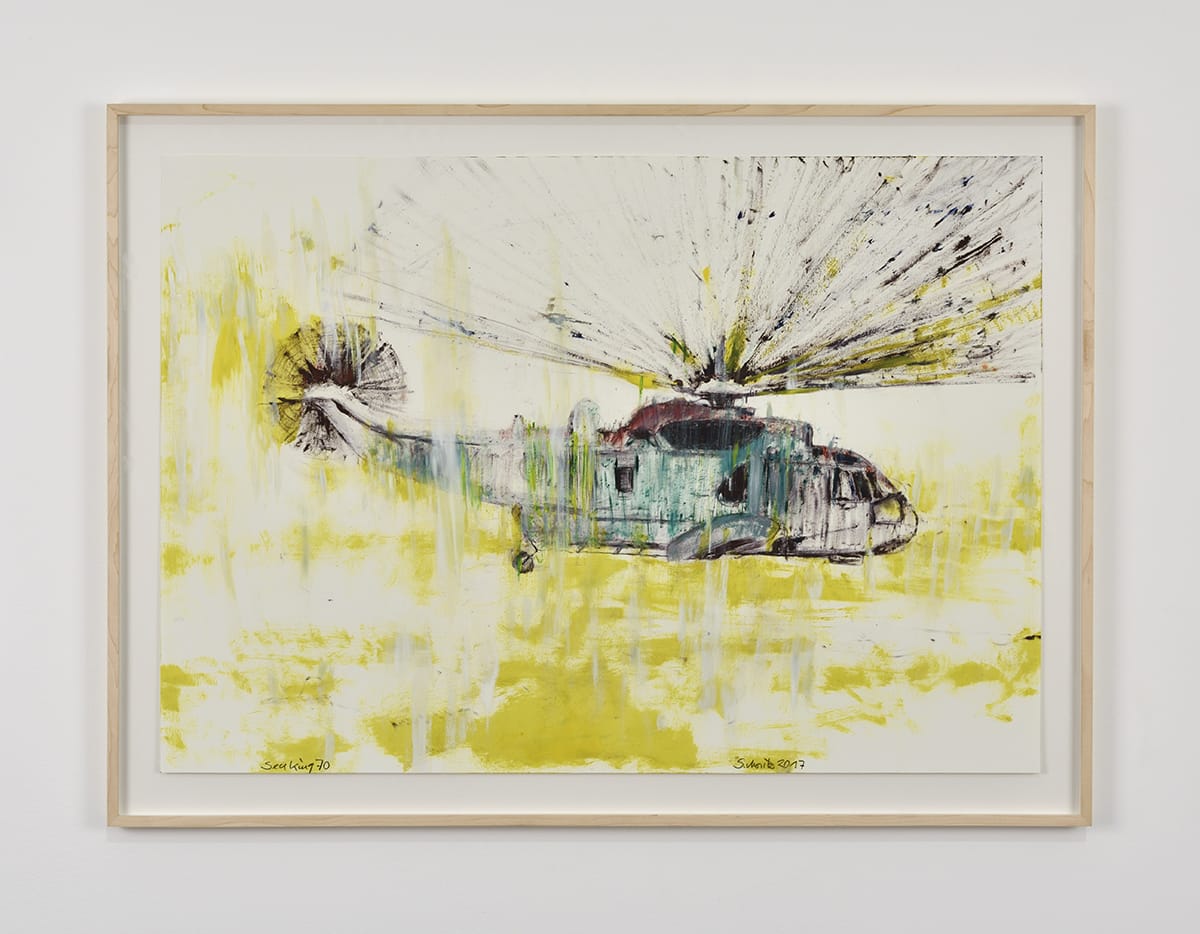 |
| Sabine Moritz, Night I, 2019 |
As I
perused Sabine Moritz’s abstract paintings on the ground floor of Marian
Goodman, I was strangely unaffected. I was surprised that these colourful,
highly abstract paintings didn’t appeal to me, but I was not convinced they were
doing anything I needed to see or to know about. I have to admit, I was
disappointed to the extent that I wondered if Moritz had established her name
thanks to her famous husband—Gerhard Richter. I know I am meant to look at her work as independent, but it was difficult not to compare it with the
complexity and ambiguity that draws me to Richter’s. Her big abstract
paintings are vivid, rich in colour and paint, moving different shades of the same
colour in different ways around the canvases. However, I didn’t get the sense
that they were doing much more.
 |
| Sabine Moritz, Ice, 2019 |
In some of
them, we see flowers exploding, and apparently, they have been realized through
a unique mode of paint application. I was reminded of Berthe Morissot, another painter who was known because
of the men in her life, and indeed, there were moments where I thought Moritz’s
paintings resembled blown up details of Morissot’s. Eruptions of colour with
large (as opposed to short) expressive brushstrokes were resonant of Morissot’s impressionist creations.
However, Moritz’s paintings are flat, superficial, not capturing a complexity
of perspective, depth and creating intimacy with their spectator. Indeed, the
absence of tension was my problem with Moritz’s paintings.
 |
| Sabine Moritz, Sea King 82, 2017 |
I found the
figurative works in the downstairs gallery to be more interesting. The four
walls were covered in helicopters. The helicopter drawings and paintings on
paper are also colourful, but more subtley so. The helicopters dive and float, swooping
through skies, hovering above the sea and the city, on unidentifiable paths.
At the level of the image, the helicopter series is engaging for its ideas of
repetition, exploration of the relationship between history and representation,
as well as a resulting reflection on the changing connotation of the helicopter
as machine over the years.
 |
| Sabine Moritz, Sea King 70, 2016 |
Most
obviously, we recall the choppers of the Vietnam war, think of the use of
helicopters to deliver first aid, transport the police and the army, the helicopter
as a carrier of weapons and parachuters, as well as weapons. In spite
of the longevity of the intellectual and technical history of the helicopter as
vehicle and machine, Moritz’s drawings and paintings are spontaneous, sometimes
intimate and filled with emotion. The resulting multicoloured helicopters hang in the
air, fly through the sky, explode like bombs, are sometimes in the process of
being effaced from the image, at others heading straight for us. Some of them
are just a few lines, others, a frenzy of expressive gestures, flying through moody
skies, ostensibly evoking their potential surroundings, their mission. All these
qualities meant that the helicopter images were engaging and, for me, redeemed
the exhibition.
copyright all images Marian Goodman Gallery







